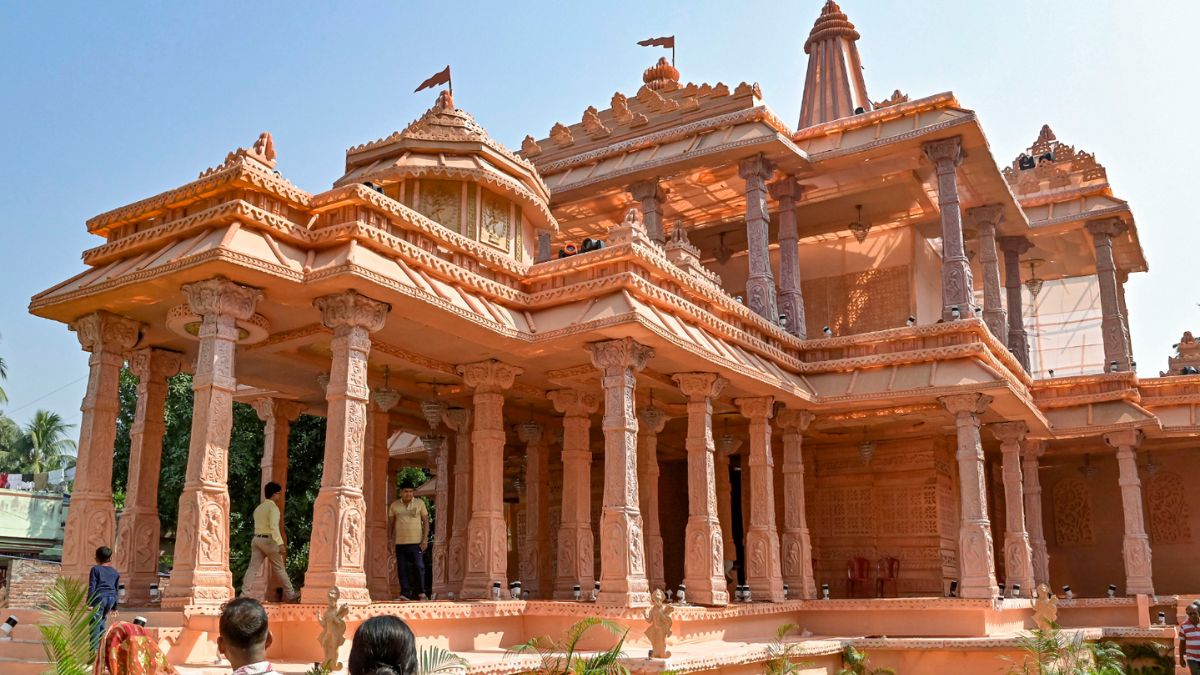The Ram Mandir: A Saga of Faith, Conflict, and Triumph (1000-2023)

Tracing the footsteps of history, faith, and perseverance, the story of the Ram Mandir unfolds like a poignant symphony echoing through centuries. It’s a tapestry woven with threads of belief, conflict, and unwavering determination, resonating with generations. This isn’t just a narrative of bricks and mortar; it’s a symbol of a nation’s identity, its quest for justice, and ultimately, the pursuit of harmony.
1000-1528: Treta Yuga Dreams and the Mughal Shadow
Ancient tales paint a picture of a magnificent Ram Mandir in Ayodhya, its courtyard adorned with the footprints of Rama, Sita, and Lakshmana. However, in 1428, history took a turn. Mughal emperor Babur conquered Ayodhya and replaced the temple with a mosque on the disputed land. This ignited a centuries-long fire of pain for the people of Ayodhya. While tensions simmered under Mughal rule, open conflict was relatively rare.
1528-1857: Seeds of Conflict and Hindu Struggle
As the Mughal Empire weakened, religious discontent began to rise at the grassroots level. The Ayodhya mosque built on the temple site became a major flashpoint. 1853 saw the Sepoy Mutiny, partially fueled by the Ayodhya dispute. After its suppression, the British government adopted a policy of non-intervention, which inadvertently fueled tensions.
1857-1947: Independence, but the Dispute Lingers
Even after India gained independence in 1947, the Ayodhya issue remained unresolved. The first legal case was filed in 1885, sparking a prolonged judicial battle. While the Ayodhya Shri Ram Janmabhoomi Trust sought permission to build a temple, the Muslim side claimed ownership of the mosque. The government’s continued non-intervention only aggravated the situation.
1947-1962: Simmering Tensions and Hindu Nationalism
In the early years of independence, maintaining religious harmony took priority. However, the Ayodhya issue resurfaced periodically. A dispute arose in 1962 over Hindus’ right to worship at the site, further heightening tensions. This period also saw the rise of Hindu nationalist organizations like the Bharatiya Jana Sangh.
1962-1984: Preparations for a Firestorm
The political turmoil of the 1970s further politicized the Ayodhya dispute. Hindu nationalist organizations exploited the issue to mobilize Hindu society. The 1980s saw the Ram Janmabhoomi movement gain momentum, led by the Vishwa Hindu Parishad and the Bharatiya Janata Party. The Shahi Idgah also played a significant role in asserting claims to the land.
1984-1992: Flames of Fire
The Ram Janmabhoomi Rath Yatra of 1984, a journey across India, fueled Hindu support for the movement. In 1986, the district judge of Ayodhya granted Hindus permission to worship at the mosque complex, further inflaming tensions.
1992-2019: Legal Turmoil and the Light of Discovery
The destruction of the Babri Masjid in 1992 by a mob led to widespread riots and a prolonged legal battle. The Liberhan Commission investigated the riots, while the court case over the disputed land continued. In 1996, the Allahabad High Court, in a divided verdict, ordered the land’s division, two-thirds to Hindus and one-third to Muslims. Both sides appealed.
A turning point came in 2010. The Archaeological Survey of India discovered the remains of a temple beneath the Babri Masjid, strengthening the Hindu claim and paving the way for the Supreme Court’s historic verdict in 2019. The court upheld the Allahabad High Court’s decision, mandating the construction of a Ram temple on two-thirds of the land while promising an alternative site for a mosque.
2020-2023: Realizing a Grand Dream
Prime Minister Narendra Modi laid the foundation stone for the Ram Mandir construction on August 5, 2020. Since then, progress has been swift. The first phase is complete, and the temple’s sanctum sanctorum is due to open for devotees in 2024.
The Ram Mandir: A Symbol of Justice, Faith, and a Future of Hope
The construction of the Ram Mandir transcends bricks and mortar. It’s a symbol of centuries-old faith, struggle, and perseverance. It marks the closure of a chapter marred by religious intolerance and communal discord. However, it’s not just about erasing the ghosts of the past. It’s a chance to heal wounds, fostering mutual understanding and paving the way for a more just and harmonious future.
The Ram Mandir stands as a beacon of justice, not just for Hindus but for all Indians seeking fair resolution to complex historical issues. It represents the triumph of faith, reminding us that unwavering belief can move mountains, both literally and metaphorically.
But the true potential of the Ram Mandir lies in its promise of a future built on hope. It serves as a potent symbol of unity, reminding us that despite our differences, we are one nation. It embodies the ideals of justice and equality, ensuring that every community feels respected and secure. And ultimately, it promotes harmony, urging us to coexist peacefully, celebrating our diverse identities while forging a shared future.
The Ram Mandir may have a complex and contentious past, but its future holds the promise of a brighter India. It’s a reminder that even the deepest divides can be bridged through faith, perseverance, and a shared commitment to justice and harmony. The Ram Mandir may be a temple, but its true essence lies in the values it embodies – values that can guide us towards a future where every Indian, regardless of faith or background, can thrive.




